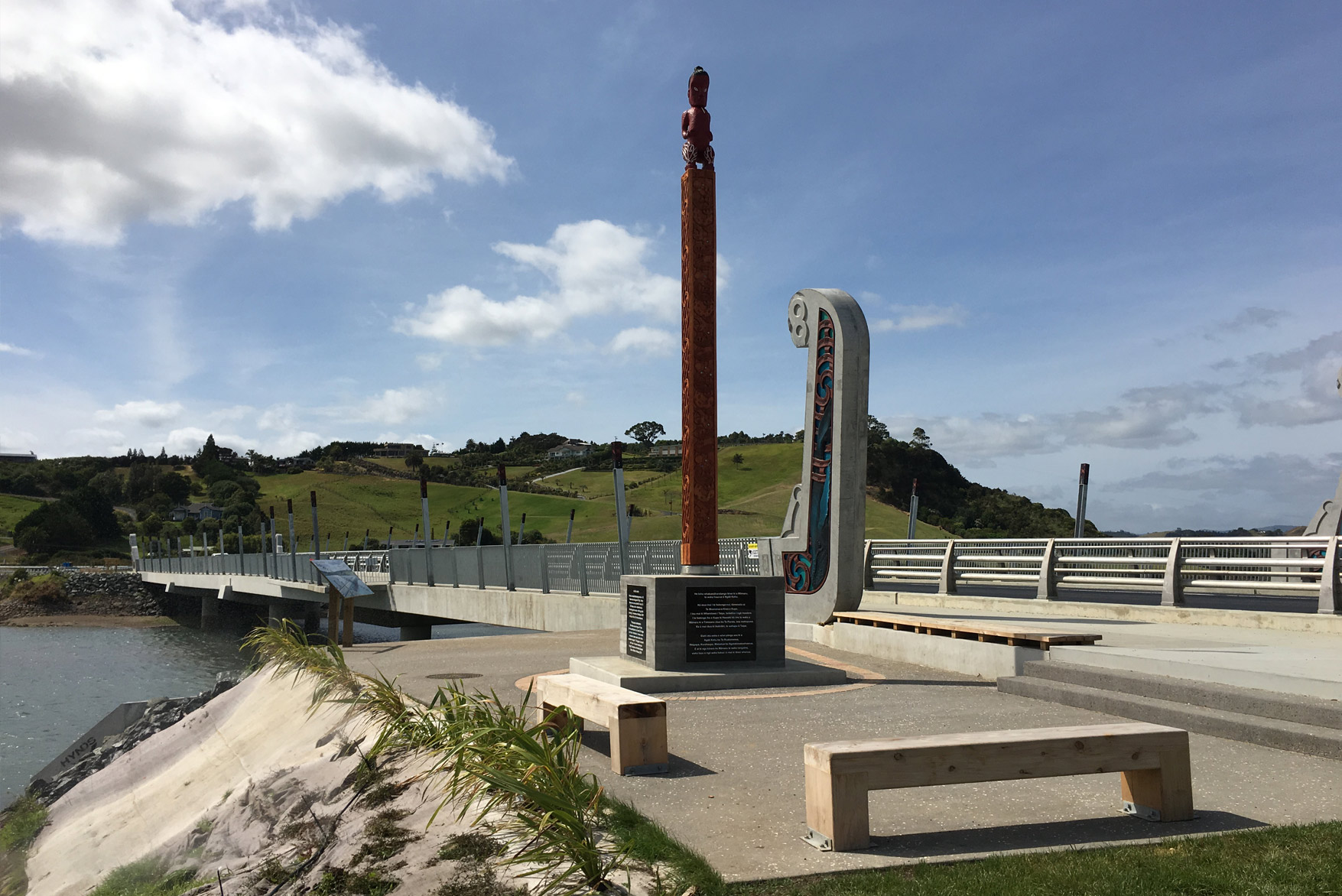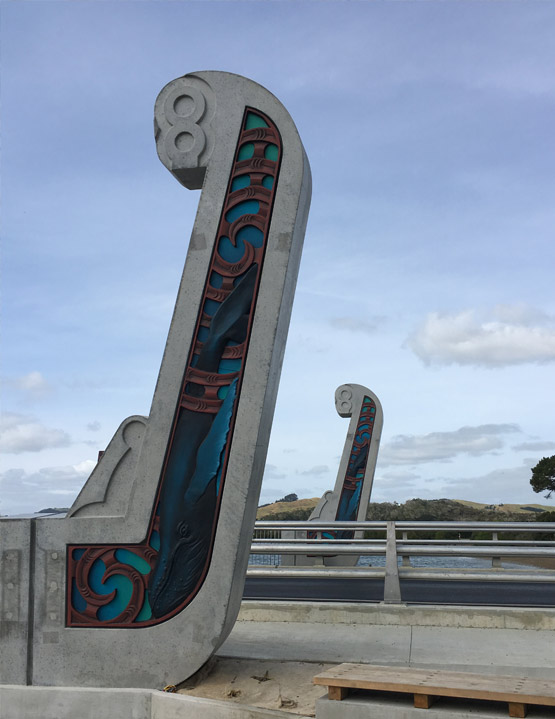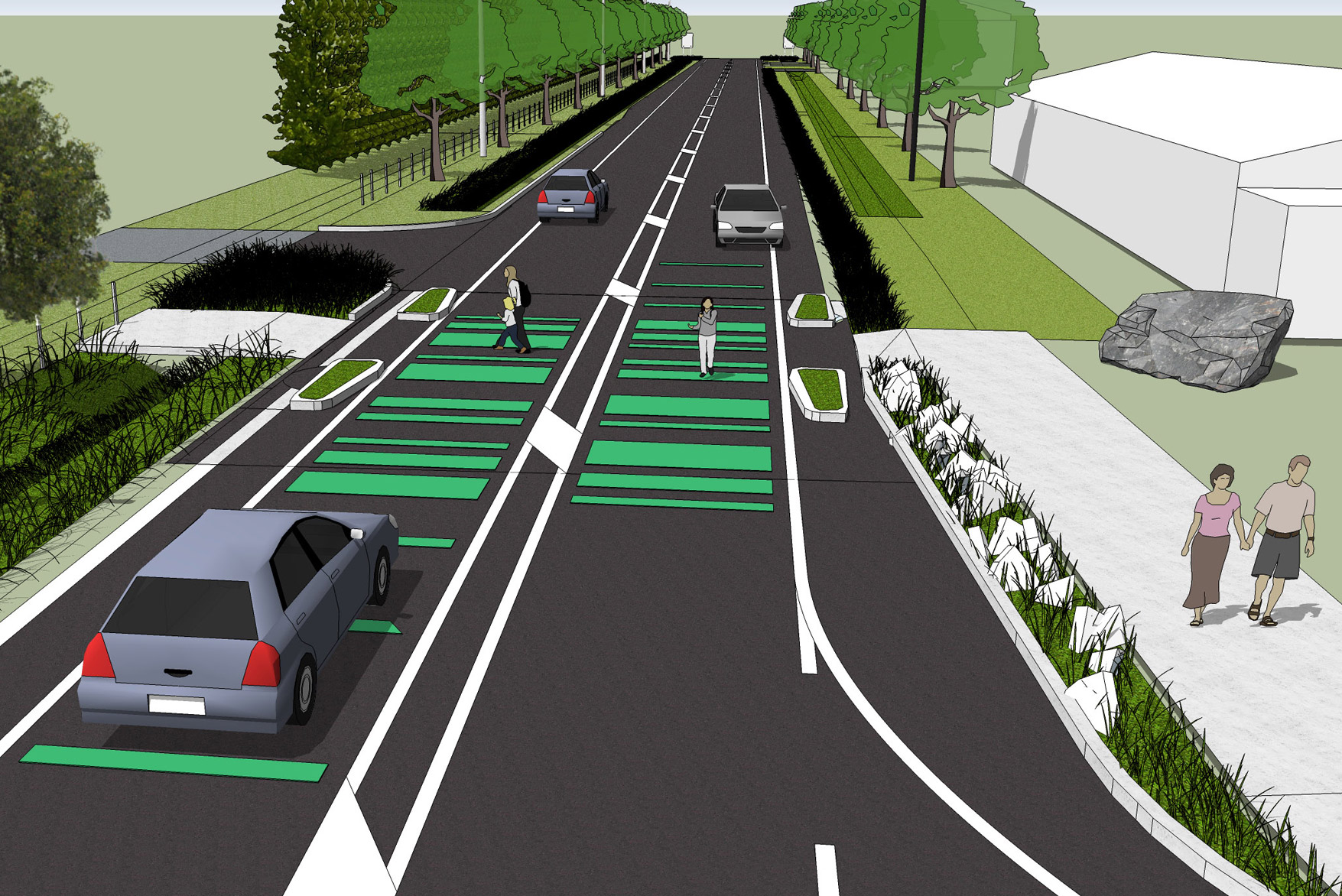Improved safety and community connectivity, and integration of the upgraded State Highway 10 into the existing landscape within the Taipā village, were key objectives.
Significant safety improvement was achieved through replacement of the existing one-lane bridge on State Highway 10. A two-lane bridge with redefined intersections provides for safer vehicle movements and enhanced crossings at locations aligned with pedestrian desire lines and key trip generators. Connectivity improvements include a new cycleway on the western edge of State Highway 10, all along the Taipā village.
Urban and landscape design principles were consistent with NZTA's Bridging the Gap Landscape Guidelines. Boffa Miskell assisted the NZTA in producing these publications which contain high-level policy framework and principles; and were awarded the NZILA Landscape Publication Award in 2015. These principles represent main considerations to drive the urban and landscape design component of the project and are supported by place-specific design guidance.
The main challenge of the project was the design for the new Taipā Bridge. Several additional activities, stakeholders’ aesthetic aspirations, and practical limitations made it a challenging exercise. Extensive consultation with local iwi and a collaborative approach with engineers produced an outcome that brings a positive road-user experience and creates a good urban form, while also working with nature and respecting the existing cultural landscape.
The new bridge is 107m long, with two lanes of traffic and a shared path for pedestrians and cyclists. Waka tauihu (prow) and taurapa (stern) end panels of a seafaring waka adorn each end of the structure. This detail acknowledges Taipā as one of the first landing places in New Zealand of the Polynesian explorer Kupe.
The waka hourua (a traditional double-hulled sailing canoe) design and the pou whenua were the result of extensive collaboration between project partners and the local hapu representatives of Ngāūti Kahu. Additionally, an historic monument commemorating local soldiers who died in the line of duty was relocated from a shop carpark to a more prominent and deserving location.
The finished project enhances the prominence of Taipā village as a centre for the local community and as a tourist attraction for visitors. This was achieved through integrating the upgrades and new infrastructure with the existing natural landscape (in particular with the Oruru River estuary) and by sensitively addressing local community expectations regarding the preservation of heritage values.


